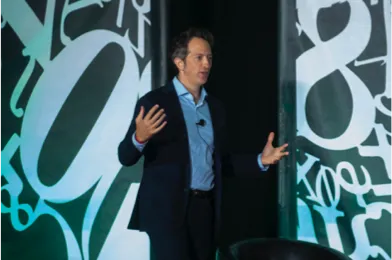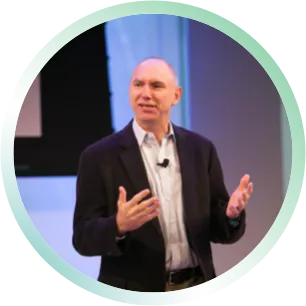SECTION 02
De-mystifying Carbon Markets
Carbon offsets—climate solution or climate problem?

As hundreds of countries and organizations jump on the ‘net zero’ bandwagon, the global carbon offset market has taken off. For many businesses and governments, it’s often cheaper and easier to buy these ‘offsets’ than to reduce or eliminate emissions in their own operations.
Whether it’s an airline offering to fund planting trees to offset emissions from your travel, or an e-commerce platform devoting a portion of your purchase to developing carbon dioxide removal technologies, offsets—in theory—enable organizations to both save money and the environment.
But here’s the problem: many carbon offsets sold today make assumptions about how much carbon they are removing or reducing that are not based on sound science or data—and some can even make climate change worse.
To address these challenges, our researchers, alumni, and students are working on multiple fronts to ensure that carbon offsets can be a more legitimate tool in the fight against climate change.
AVID+
Do offsets really cut emissions?

While cutting emissions in the first place remains the best way to reach net zero, John Sterman developed a simple framework called AVID+ to help companies and governments determine if the offsets they’re buying actually cut emissions. According to John, legitimate offsets must be Additional, Verifiable, Immediate, and Durable. They must meet all four of these criteria. For those that do, it’s best if they also create additional benefits, such as good jobs, better health, and community resilience and equity (the “+”).
Learn what this means (check out our tiktok)!
Offsets that don’t meet AVID+ criteria could not only hurt the environment, but are increasingly exposing companies to well-justified accusations of greenwashing, damaging their reputation, alienating customers, communities, and capital markets,and,in some cases, leading to lawsuits.
Read John Sterman’s op-ed in MarketWatch.
Read more about AVID+ here.
The best way to reach net zero is still just to reach zero—cutting emissions in the first place.”
—John Sterman
Carbon Confusion Research
Carbon commitments made by organizations to reduce emissions are a critical component of the “E” in ESG ratings, which aims to quantify the environmental impact of a firm. But in order to properly measure that environmental impact, it’s important to ensure that any action around emissions reductions, offsets, and removals are carried out and verified accurately. Unfortunately, verifying the authenticity of carbon offsets and credits is a challenging task, leaving room for doubts and contestations.
To address this challenge, we recently launched Carbon Confusion, a new suite of research under our Aggregate Confusion Project, to examine fundamental questions around scalability, additionality, asset pricing, and the evolving regulatory environment related to offsets. This includes a deep dive into:
- The basic building blocks and standards behind designing carbon offset strategies that work
- Current problems in measuring carbon emissions reduction and reporting out on progress made in reductions
- The incentive structures, governance, and oversight of institutions and corporations relying on carbon offsets to meet their climate goals (including those of carbon registries)

Roberto Rigobon,
Society of Sloan Fellows Professor of Management

Angela Chen, Research Scientist, Carbon Confusion
The Carbon Confusion Team
Appointed as research scientist by Professor Roberto Rigobon, Angela Chen oversees the Carbon Confusion project. She is assisted by graduate research assistants Monica Larazzabal, MBA ‘23, as well as MIT undergraduates Christopher Noga, Angela Gales, Richard Chen, Trinity Stallins; and Georgetown undergraduate Justin Grossman.
“Understanding the foundational building blocks will help us come up with better approaches for increasing sorely-needed trust in the carbon markets. Investors need to feel confident in the credibility of portfolio companies claiming ‘net zero’ targets,” Angela says. With their findings, the team hopes to build research communication tools for the larger carbon market conversation.
Stayed tuned for research from Carbon Confusion.
...it’s important to ensure that any action around emissions reductions, offsets, and removals are being carried out and verified accurately.”
MIT's first carbon-neutral summit
Demystifying Carbon Markets
— MIT 2023 Sustainability Summit
A net zero future. That’s the focus of this year’s annual student-run MIT Sustainability Summit. Organized by Kate Bartick, MBA ’23, Monica Larazzabal, LGO ’23, and Sandhya Mahadevan, MBA ’23, this year’s event promises to make history—as MIT’s first carbon-neutral summit!
Join us on Friday, April 28, 2023, (on campus or virtually), as we explore the world of carbon markets and credits.
Register NowWe hope attendees will walk away with an understanding of the basics of carbon markets, so they can follow the current debates in the space and their social, political, and financial implications.”
Q: What do you hope attendees take away from the Summit?
Sandyha, Kate, and Monica: Our broad mission is to educate and empower present and future leaders to innovate, collaborate, and take inclusive action to protect people and the planet. We hope attendees will walk away with an understanding of the basics of carbon markets, so they can follow the current debates in the space and their social, political, and financial implications.
We also hope attendees leave the summit with a clear idea of the role of carbon markets (carbon footprint, carbon management, carbon credits, and carbon removal) within broader climate action and carbon emissions abatement plans, whether at their organizations or in their personal lives. These strategies will range from decarbonizing supply chains to understanding carbon removals and the carbon marketplaces that arch over the whole system.
Q: Why is MIT the place to highlight carbon markets?
MIT has world-renowned scientists, political theorists, innovators, and economists, and is known for its academic rigor and focus on implementation—making it the perfect environment for a summit on carbon markets. Additionally, MIT’s focus on entrepreneurship and technology plays well with our team’s interest in showcasing innovative solutions around carbon management and carbon removal at the summit.
Our 2022 MIT Sustainability Summit focused on environmental justice, so we have a strong framework to host conversations about the social and environmental justice implications of carbon markets. We want this year’s conversation to touch on carbon markets as a mechanism to direct capital from stakeholders responsible for emissions towards actors and countries that have decarbonization or carbon removal potential.
If implemented correctly, this should align with the climate justice frameworks upheld by the UNFCCC. We also hope to discuss ways to prioritize the interests of historically marginalized communities in the implementation of all carbon removal projects, from nature-based to engineered solutions.

Kate Bartick,
MBA '23
Monica Larazzabal,
LGO '23


Sandhya Mahadevan,
MBA '23
Q: When you think about the upcoming Summit, what’s one thing you're excited about?
We are particularly excited to hold a carbon-neutral summit and share our underlying process so other organizations might replicate it. We know that many small organizations don’t always have the resources for a dedicated carbon management team, and neither do we! We’re leveraging our existing operations team and our advisors in the MIT ecosystem to implement low-carbon operations and use high-quality offsets (that meet the AVID+ criteria as closely as we can) for what we are unable to decarbonize within the supply chain.
Q: As future leaders, in your opinion, what’s missing from this conversation? We believe a systems-level approach is often missing from the discussion about carbon markets.
There are numerous debates that put carbon markets under scrutiny. To name a few, there is the potential moral hazard that companies might use carbon credits instead of abating their own emissions, and there are integrity scandals like companies claiming carbon neutrality by planting trees in areas of forest fire vulnerability.
There is necessary discourse around these challenges, but we believe the conversation is missing a dual approach of applying both rigor and inclusivity in solutions. The market cannot work without high-quality rules and solutions, but also requires an “all of the above” approach that encourages a diversity of solutions.
We are particularly excited to hold a carbon-neutral summit and share our underlying process so other organizations might replicate it.”

What’s the Future of Carbon Markets
Thomas Annicq, MBA ’11, CEO and Co-founder, oneshot.earth
If entrepreneur Thomas Annicq, MBA ’11, has his way, the future of carbon markets lies in a completely new approach—a revolution led by his startup, oneshot.earth
Read More“Every year, the world emits 60 gigatons of greenhouse gasses into the environment right now, but the earth can only absorb about 20 gigatons of CO2,” Thomas says. “We think the solutions to climate problems need to tackle that gap—now.”
To close that gap sooner, rather than later, Thomas co-founded oneshot.earth, speeding the adoption of carbon credits as a commodity—unlocking value for companies while also saving the planet.
“Instead of being dependent on major companies like Delta Airlines to buy their million tons of carbon credits every year, investors can buy and finance these credits today,” Thomas says. “We’re building the mechanisms and infrastructure to make this happen.”
Oneshot.earth is making investing more attractive by vetting carbon credit projects and bundling them for investors. But what makes a good carbon project? “If carbon credits are going to be an asset class, they’ll have to be aggregated,” says Jason Jay, who advised Thomas early in the startup’s creation. “Oneshot.earth is working hard to figure out how best to bring high-quality credits to the marketplace and bundle them.”
Stopping 1 ton of CO2e today is more important than stopping 1 ton tomorrow.”
—Thomas Annicq, MBA ’11
Today, most carbon credits are bought by ESG and corporate marketing departments, who are using them mainly for storytelling. But as governments begin to require businesses to report their carbon footprints, managers will need a reliable system to bring high-quality carbon credits online. Oneshot.earth is committed to leading the charge to create a more streamlined and standardized certification process for carbon project developers.
“We’re looking to accelerate the process, while building trust and transparency,” Thomas says. “At oneshot.earth, we like all solutions, but we like the most permanent carbon projects the most.”
Thomas’ leadership team includes two fellow MIT Sloan grads: Sustainability Certificate holders Chris Fort, MBA ’22, head of financial innovation, and Rio Richardson, MBA ’22, chief of staff. “We need more systems thinking entrepreneurs across the board,” Thomas says. “The problems we face today are complex, so the solutions won’t be simple.”
As interest in carbon markets grows, Thomas is optimistic about their future as a viable climate solution. “The climate problem is exponential, but so is our ability to tackle this problem.”
Interested in investing in carbon removal or working on new climate tech solutions? oneshot.earth would love to hear from you.

Making Climate Action More Accessible—at 40,000 Feet
Nina Birger, MBA ‘17, Sustainability Certificate, Vice President of Climate Solutions, CHOOOSE
Have you booked a flight lately? Did you notice the little pop-up about how much carbon your flight will emit? Did you read how you can spend just a bit more to act on those emissions by supporting carbon offsets, carbon removals, or Sustainable Aviation Fuel (SAF)?
Read MoreFor several major airlines and online booking tools, that process is powered by a software platform created by CHOOOSE—a startup where Nina Birger, MBA ’17, is vice president of Climate Solutions.
JetBlue, Air Canada, Booking.com, British Airways, Finnair, Trip.com, and Southwest are just a few of the major airlines and travel companies using CHOOOSE’s technology to educate their customers about carbon offsets, carbon removals, and SAF—empowering their customers to take climate action.
“Offsetting flights does not solve the climate problem,” Nina says, “but it does give people a choice, and gives them the chance to do something that does good and advances solutions.”
Offsetting flights does not solve the climate problem, but it does give people a choice, and gives them the chance to do something that does good and advances solutions.”
— Nina Birger, MBA ‘17
While earning a Sustainability Certificate at MIT, Nina took on leadership roles on the student-run Sustainability Summit team. After graduation, she continued her relationship with the Initiative, helping to manage the Initiative’s Renewable Energy Finance Roundtable program. Before joining CHOOOSE last spring, she led partnerships at North America's largest climate tech incubator—Greentown Labs with headquarters in Somerville, Massachusetts, and a new location in Houston, Texas.
When you use a travel booking site, the carbon offsetting process looks quite simple, Nina says, but behind the scenes everything from the identification, due diligence, and sourcing of offsets to the high-precision emissions calculations is very complex. Another core challenge is helping partners effectively and accurately communicate the benefits to their end customers.
“I believe that a lot of the barriers to climate action are grounded in how we communicate,” says Nina, who taught Managerial Communications as an MIT Sloan lecturer. “The climate space is complicated, so the question I think about a lot is, how do you communicate with people in a way that is transparent and honest and reflects the complexities of the science, but is not overwhelming and confusing?”
Despite the myriad challenges, Nina believes there’s never been a better time to work in climate. “Right now, there’s more attention, time, and money being given to this space. This work has never been more urgent, and there's so much to be done.”
If you’re interested, CHOOOSE is hiring, Nina adds. “We’d love to hear from you!

A Boston-based, MIT and Harvard startup, the company applies AI and robotics to make forests a viable carbon sequestration solution by helping land owners, project developers, and investors measure the carbon content of a forest with high accuracy.
“We chose an AI-based approach because we saw an ideal application for the same kind of perception AI we built for autonomous vehicles,” Peter says, “but instead of measuring pedestrians or cars in an urban setting, we measure trees and entire forests.”
By deploying LiDAR, computer vision, and satellite data to collect high-quality biomass data in forests, Gaia helps clients understand the carbon stock and timber content of their land. By measuring the carbon content of a forest with high accuracy, the firm gives carbon-credit buyers confidence that their credit was backed by a ton of carbon sequestered—creating trust in and helping unlock the carbon credit market.
A key challenge in this space is making sure that a carbon credit truly sequesters a ton of carbon from the atmosphere that would not have been otherwise.”
— Peter McHale, MBA ’22
“A key challenge in this space is making sure that a carbon credit truly sequesters a ton of carbon from the atmosphere that would not have been otherwise,” Peter says. “We’re building up our business by plugging into timber companies for exactly this reason, proving the additionality of sustainable practices. It's not just about applying powerful AI tech, but also about solving the right problems by building the right business model.”
Since launching Gaia AI in 2020, Peter and his partners have raised $250,000 in grants from Harvard and MIT, another $3 million from E14 (a fund that supports and invests in MIT startups), and an equity investment from SOSV. In 2023, Peter and his co-founder, Matthew Carpenter, were named to the Forbes 30 Under 30 in the manufacturing and industry category.